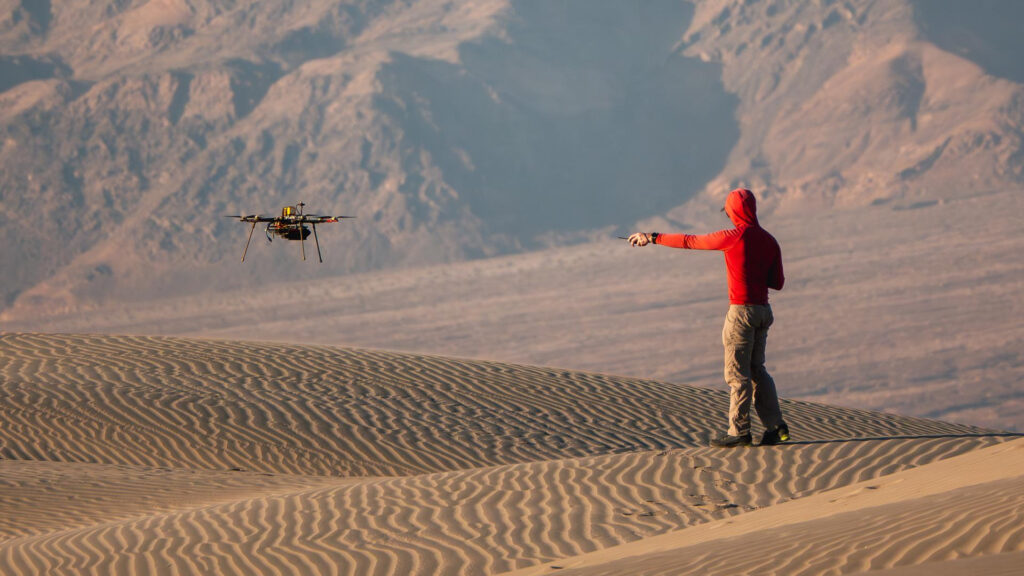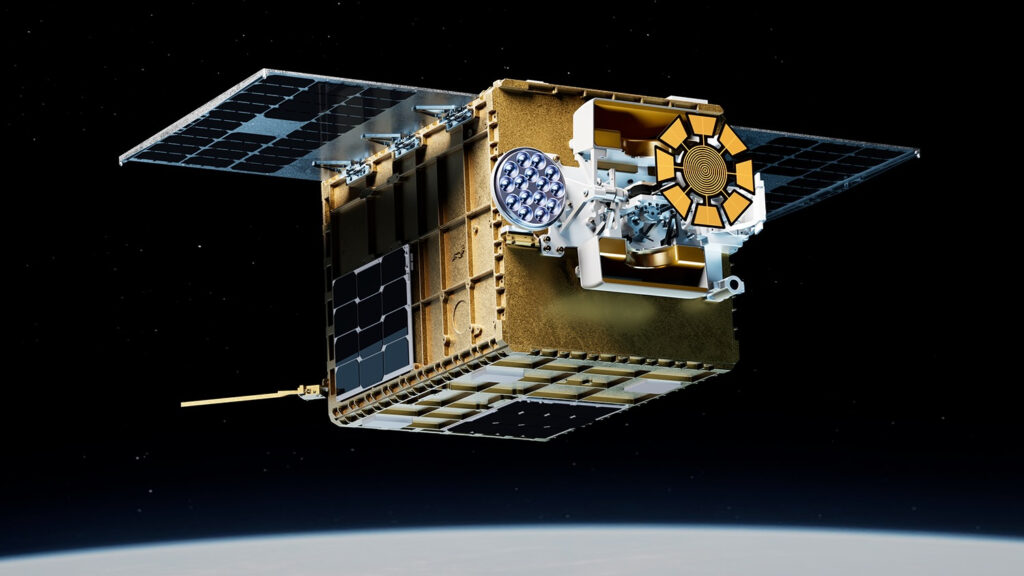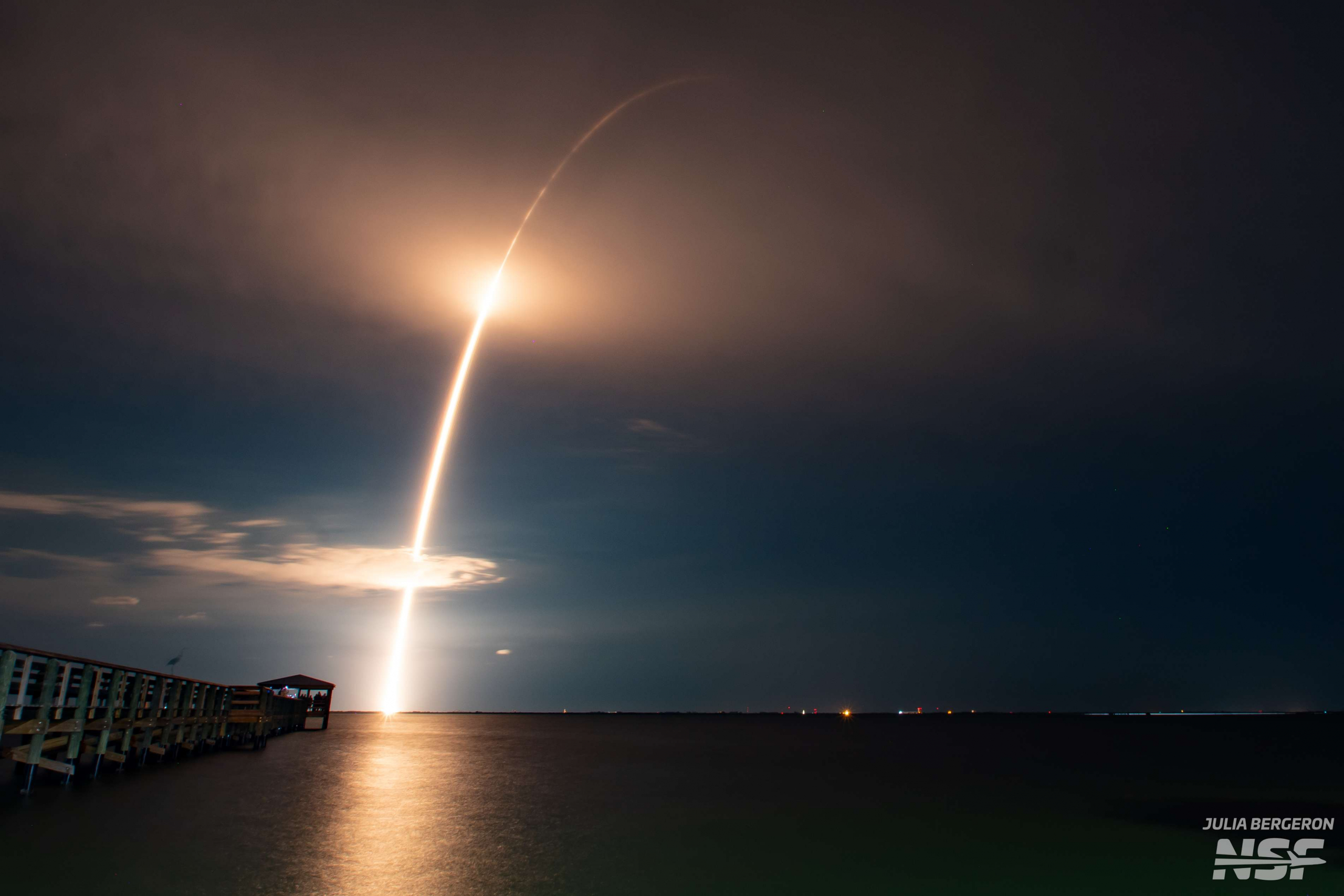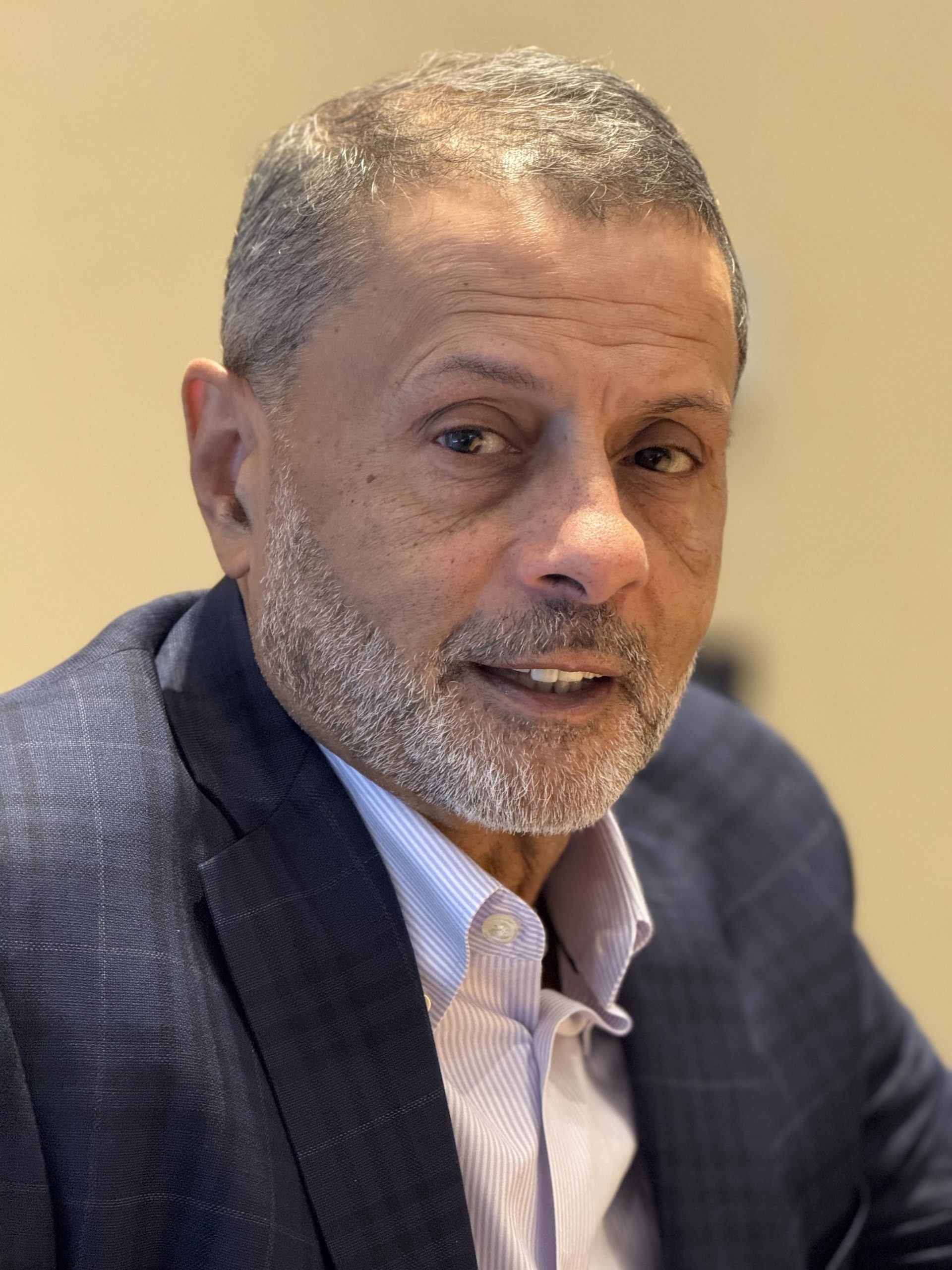Now Reading: Blood moon wows skywatchers worldwide: Best photos of the September 2025 total lunar eclipse
-
01
Blood moon wows skywatchers worldwide: Best photos of the September 2025 total lunar eclipse
Blood moon wows skywatchers worldwide: Best photos of the September 2025 total lunar eclipse

A total lunar eclipse delighted stargazers overnight on Sept. 7-8 with a spectacular display of orbital mechanics that briefly turned Earth’s natural satellite blood red.
Nikon Z8

The Nikon Z8 is a powerhouse of a camera and is brilliant in almost every aspect. It’s a full-frame mirrorless camera that performs exceptionally in low-light conditions and produces excellent images. It features top autofocus, excellent video qualities (up to 8K) an ISO range of 64-25,600 (102,400 expanded). If you want a more in-depth look, check out our Nikon Z8 review.
This week’s total lunar eclipse graced the night sky as Earth drifted between the moon and sun, veiling the lunar disk in its umbral silhouette. As the moon slipped into the deepest part of our planet’s shadow — a period known as totality — a phenomenon known as Rayleigh scattering saw the moon adopt a bloody red hue, as sunlight scattered by Earth’s atmosphere was bent onto the lunar surface.
Over seven billion people had a direct line of sight as Earth’s shadow swept over the lunar disk, according to TimeandDate, allowing photographers across western Australia, Asia, Africa and Europe to capture the distinct phases of the eclipse in exquisite detail.
Read on to see a collection of spectacular images of the Sept. 7-8 blood moon. If you missed the event — or simply want a recap — check out our live lunar eclipse blog to see a chronological rundown of the orbital shadow show, or our lunar eclipse guide for a detailed breakdown of the science involved.
The September 2025 total lunar eclipse in pictures
Earth’s inner shadow encroaches on the lunar surface
Earth’s inner shadow can be seen encroaching on the western edge of the Oceanus Procellarum lava plane in this shot from Hector Retamal, as the eclipse moved inexorably towards totality in the skies over Shanghai.
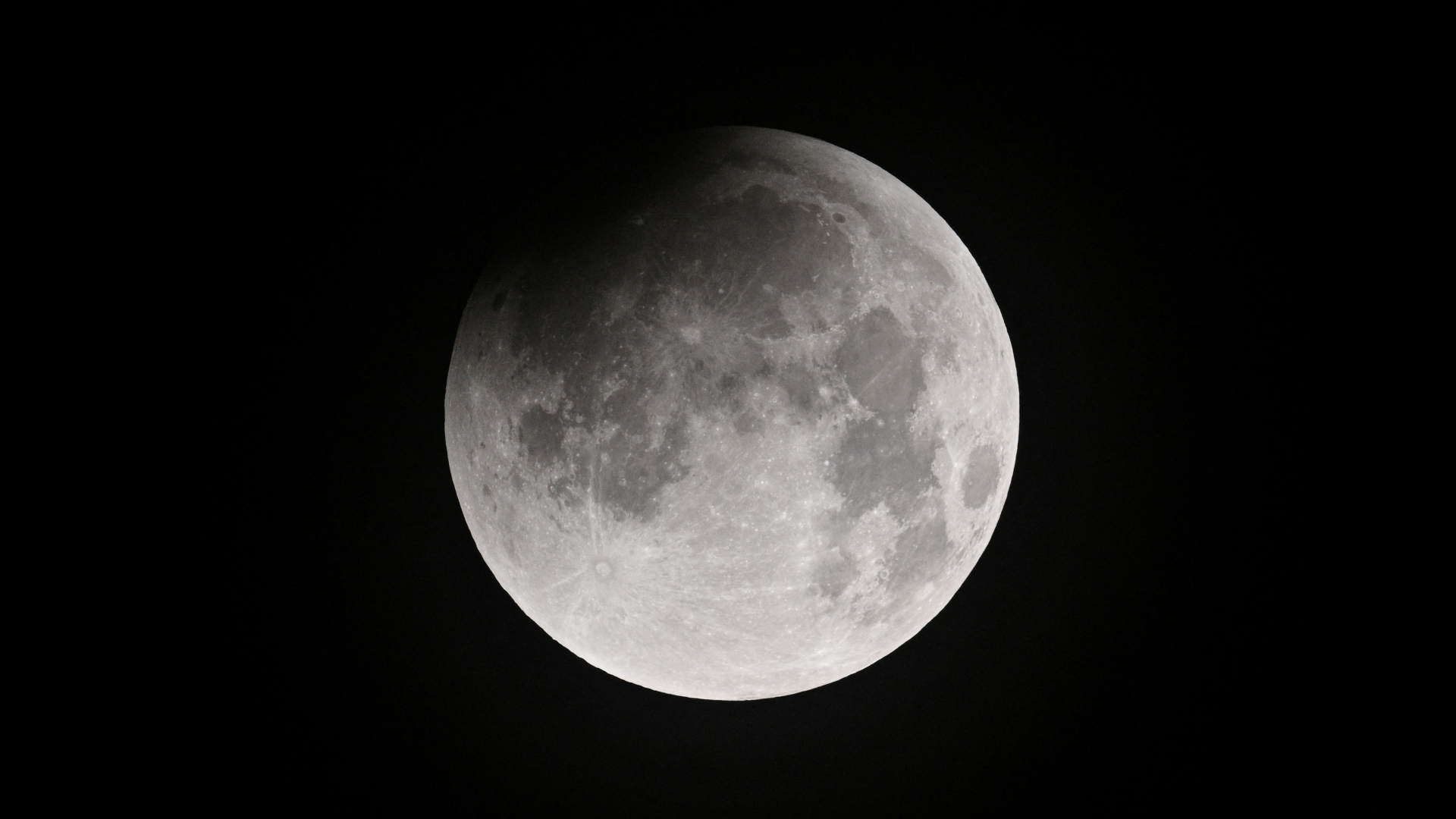
This next image from photographer Aamir Qureshi highlights the contrast created as Earth’s curved shadow continued to sweep across the face of the moon on Sept. 7, while preserving prominent lunar features, such as Tycho crater, which is visible to the south close to the shadow line.
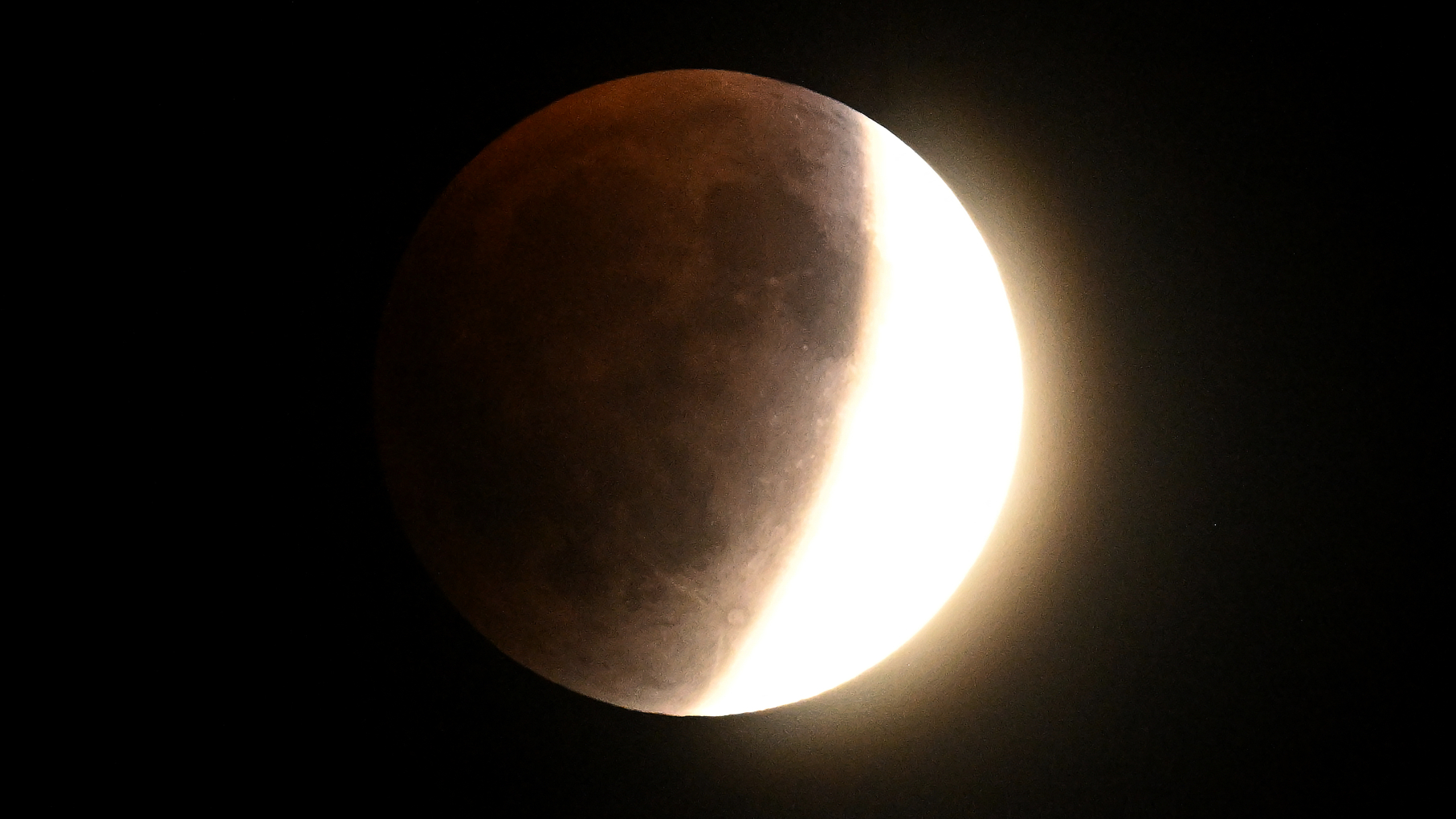
Mustafa Tas captured the moon over the Temple of Apollo in the City of Side in Turkey as Earth’s shadow threatened to swallow the moon entirely, showing a silvery sliver of lunar disk alongside the remainder of its shadowed expanse

The eclipsed form of the full moon can be seen hanging over Barcelona, minutes from totality in this image from photographer Manaure Quintero, with the iconic form of the Sagrada Familia basilica reaching up to meet it.
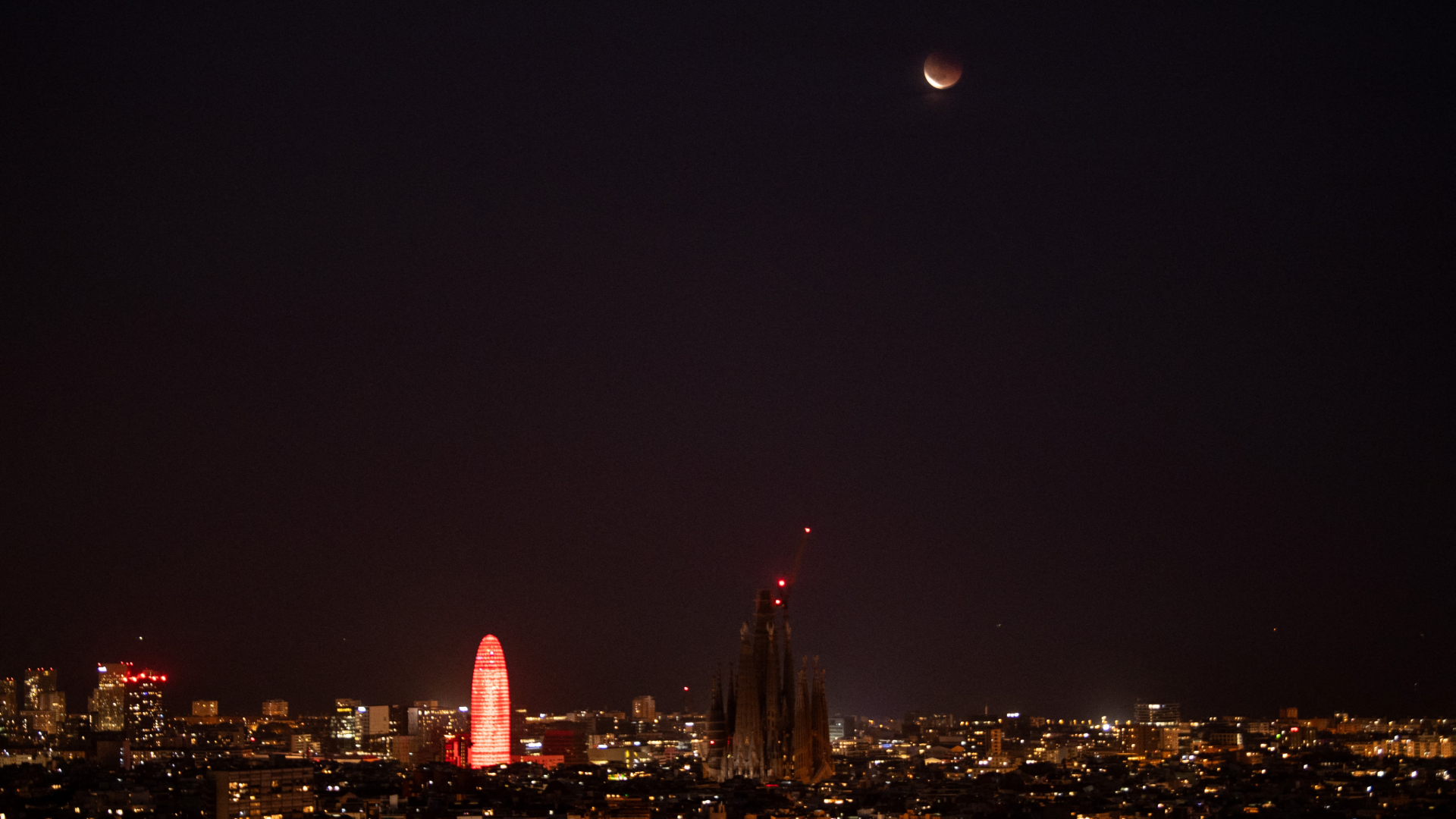
Aamir Quereshi imaged the moon moments before it was engulfed in Earth’s shadow over Pakistan, with a razor-thin crescent lit by bright sunlight. The hints of lunar maria are visible darkening the shadowed portion of the moon, while the left of its disk is bathed in darkness.
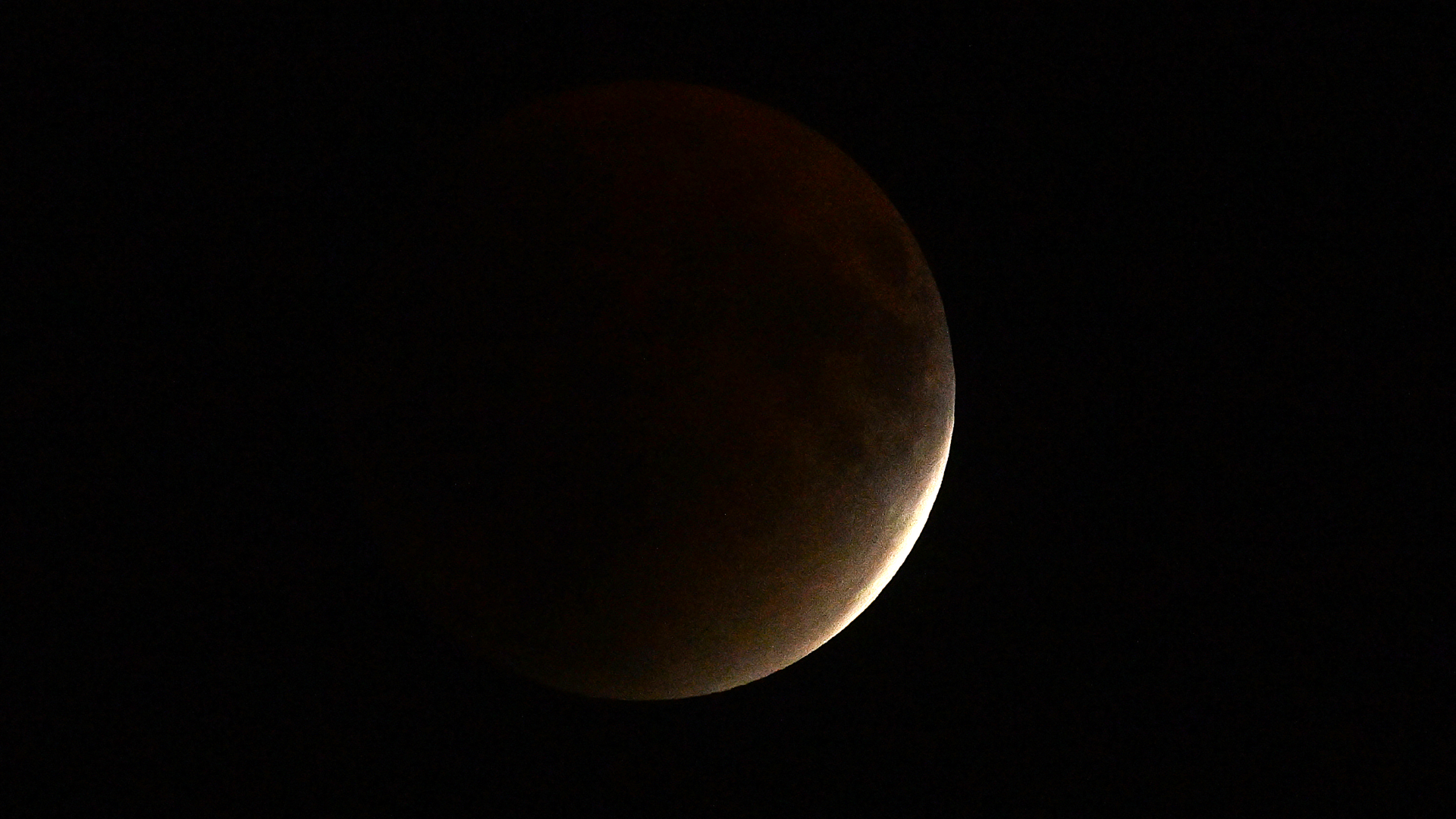
Totality
The lunar disk could be seen to adopt a reddish hue as the final sliver of its surface fell within Earth’s shadow. Photographer Fabrice Coffrini captured this transformation in his image of Earth’s natural satellite, taken as the moon graced the sky over Riex in western Switzerland.
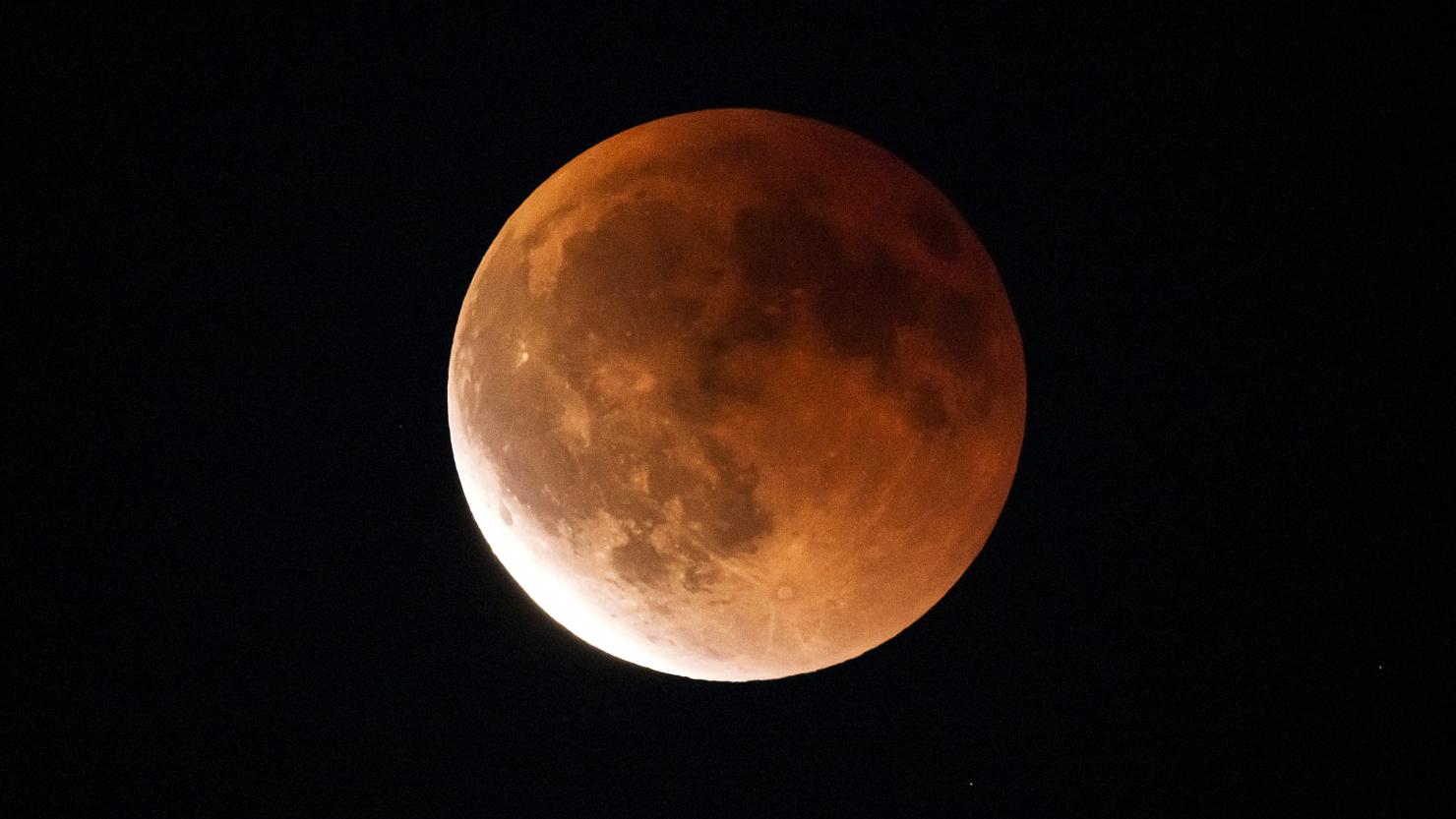
Angelos Tzortzinis artfully lined up his shot to position the blood moon above the statue of the ancient goddess Irene in central Athens, Greece, to make it appear as if the deity was gently brushing the lunar disk with her right hand, while holding a child in the other.

This thoughtful composition from Yang Bo was taken in the sky over Nanjing, China during totality, creating the illusion that the blood moon is being grasped in the claw of a vast stone dragon.

This composition positions the blood moon atop Tokyo’s famous Skytree tower in Japan, giving the impression that the lunar disk is a red orb fixed to the top of a metal staff.
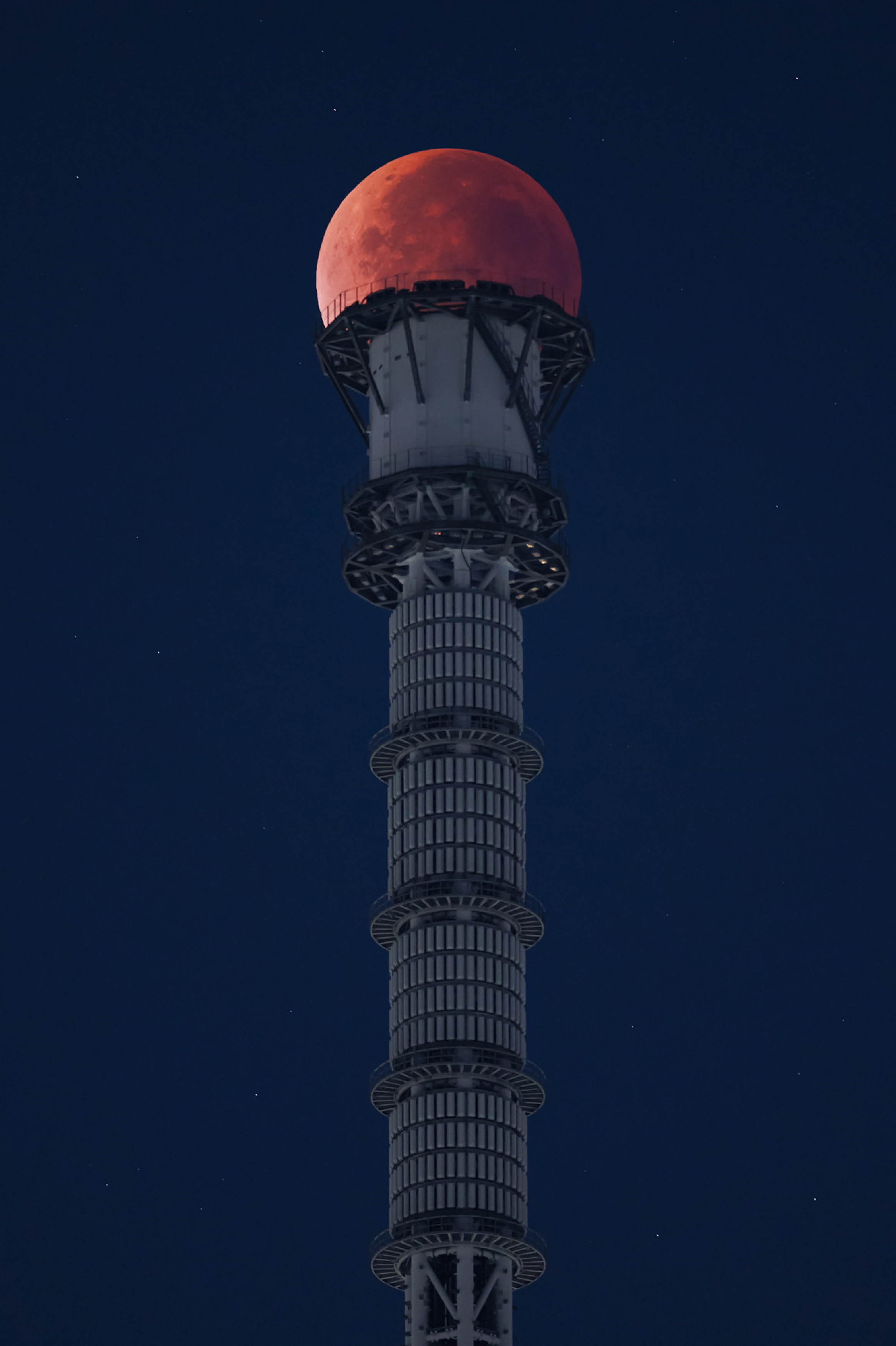
This image captured from the city of JiuJiang, China, by Shen Jungfeng highlights the shadowed expanses of all of the dark lunar seas combined, as they stretch across the moon’s surface above the pointed roof of a striking building lit by warm yellow light.

The end of totality — Earth’s shadow slips from the lunar disk
Many photographers also caught spectacular views of Earth’s shadow as it retreated from the lunar disk, including Hussein Faleh, who snapped this shot of a passenger plane skimming the moon’s western limb from Iraq, as Earth’s silhouette fell away to the right.
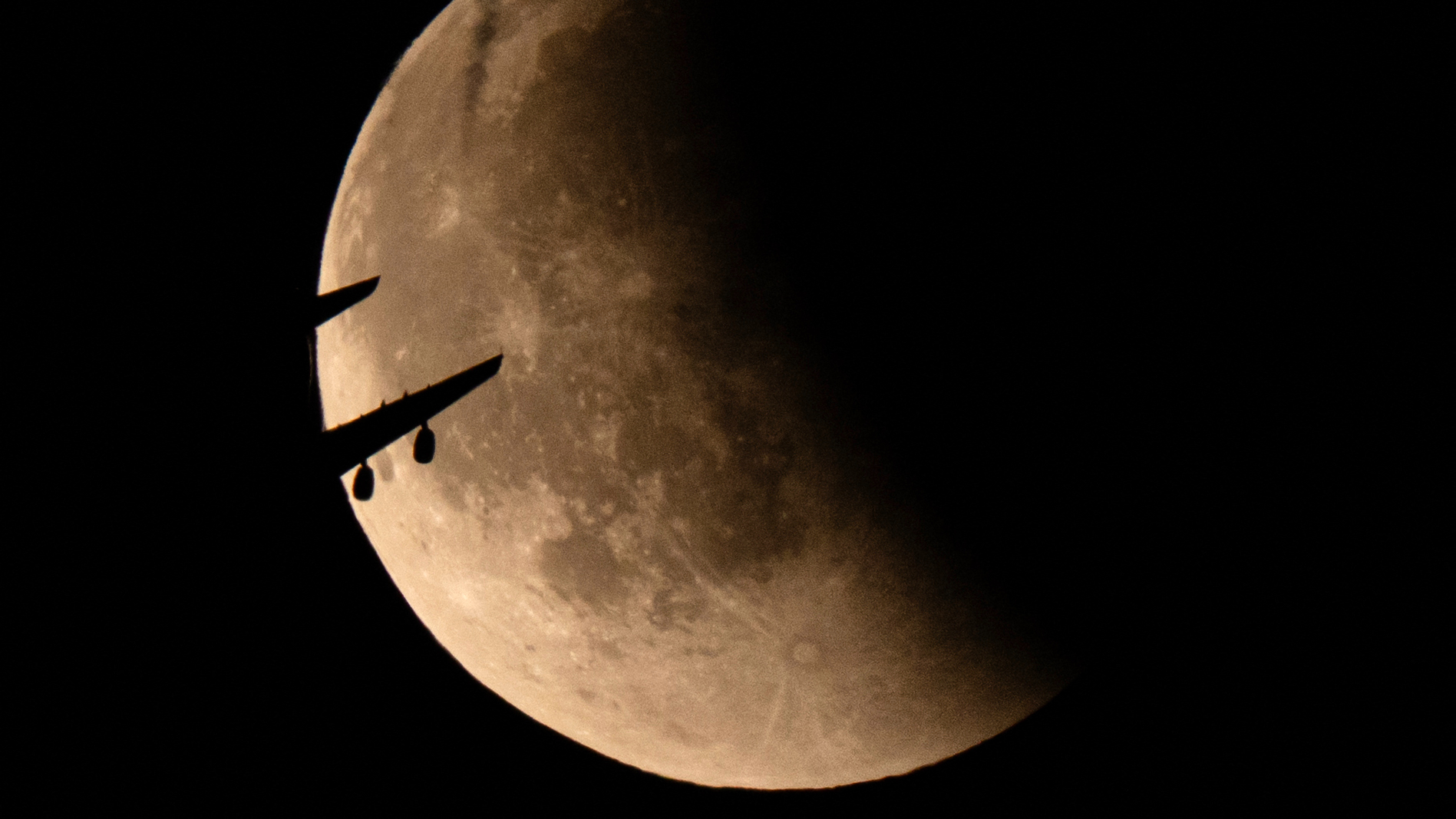
Space.com’s Anthony Wood captured this view of the moon exiting Earth’s shadow from Dartmoor National Park in the U.K. while surrounded by wild horses, sheep and, of course, a flock of photographers who had turned out in force to witness the cosmic show.
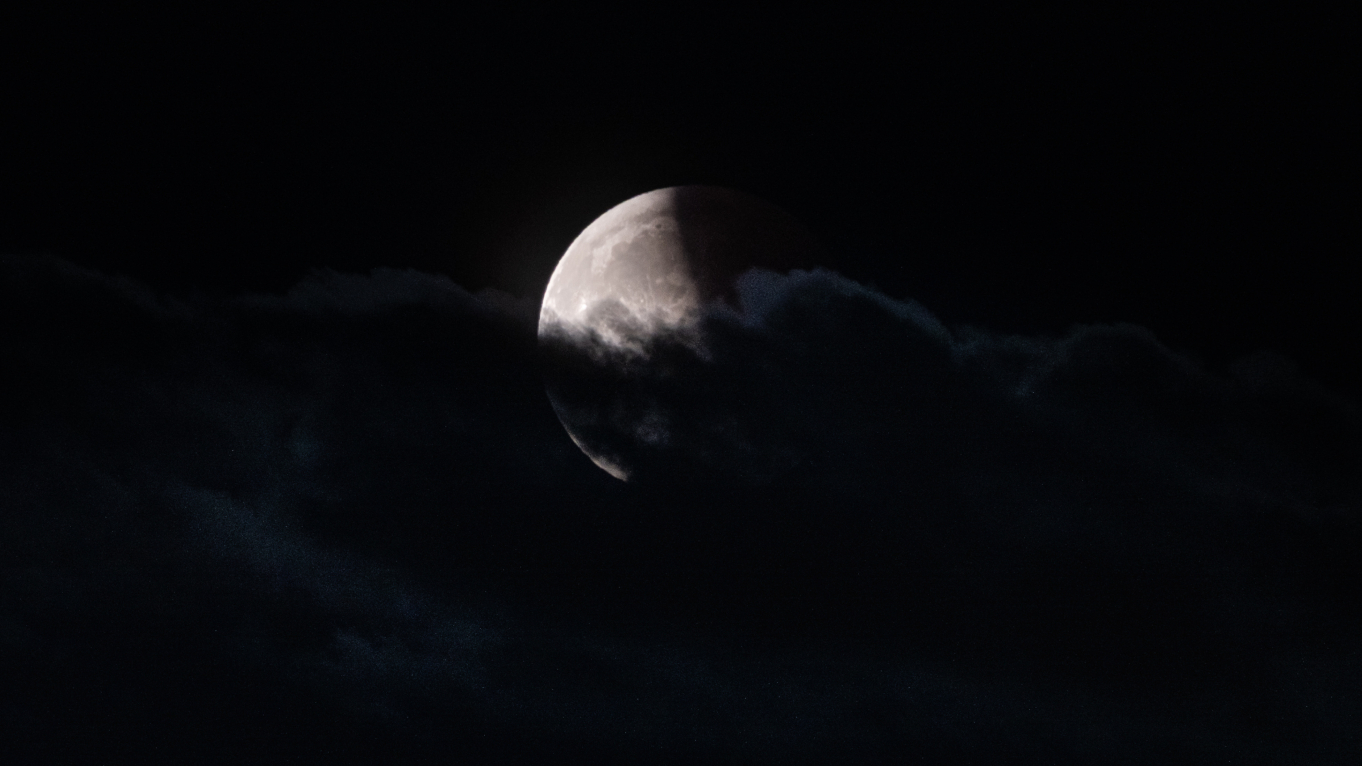
Lorenzo Di Cola snapped this breath-taking view of the moon during the tail end of the eclipse, as the lunar disk returned to its familiar lustre over Abruzzo, Italy. Earth’s shadow can still be seen as a vast crescent to the right of the image, hiding Mare Serenitatis and Tranquillitatis.
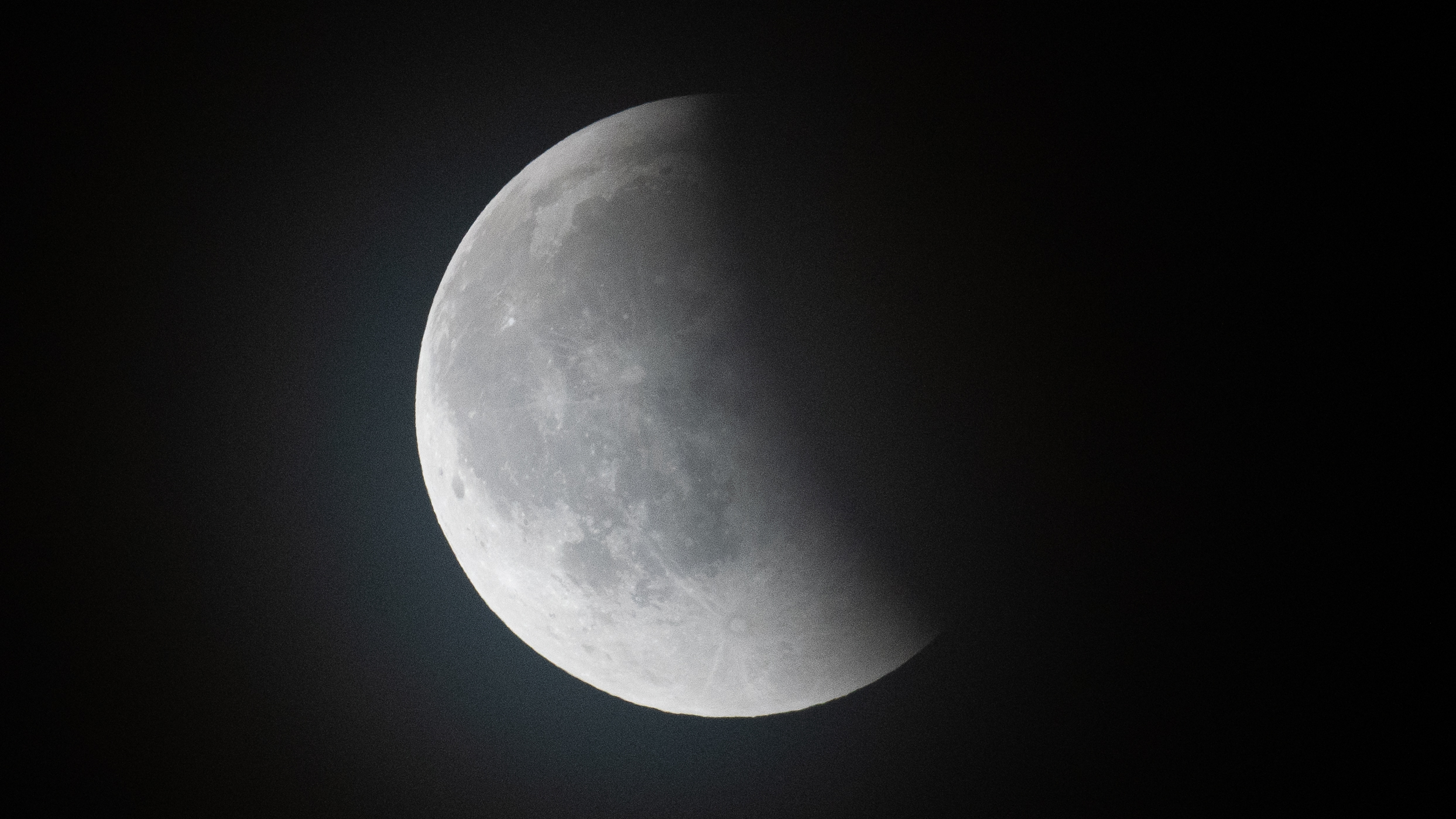
Composite shots of the September 2025 total lunar eclipse
This composite image created by Tomohiro Oshumi shows the phases of the lunar eclipse leading up to totality, as seen from Tokyo, Japan as the orbital ballet unfolded on Sept. 7-8.
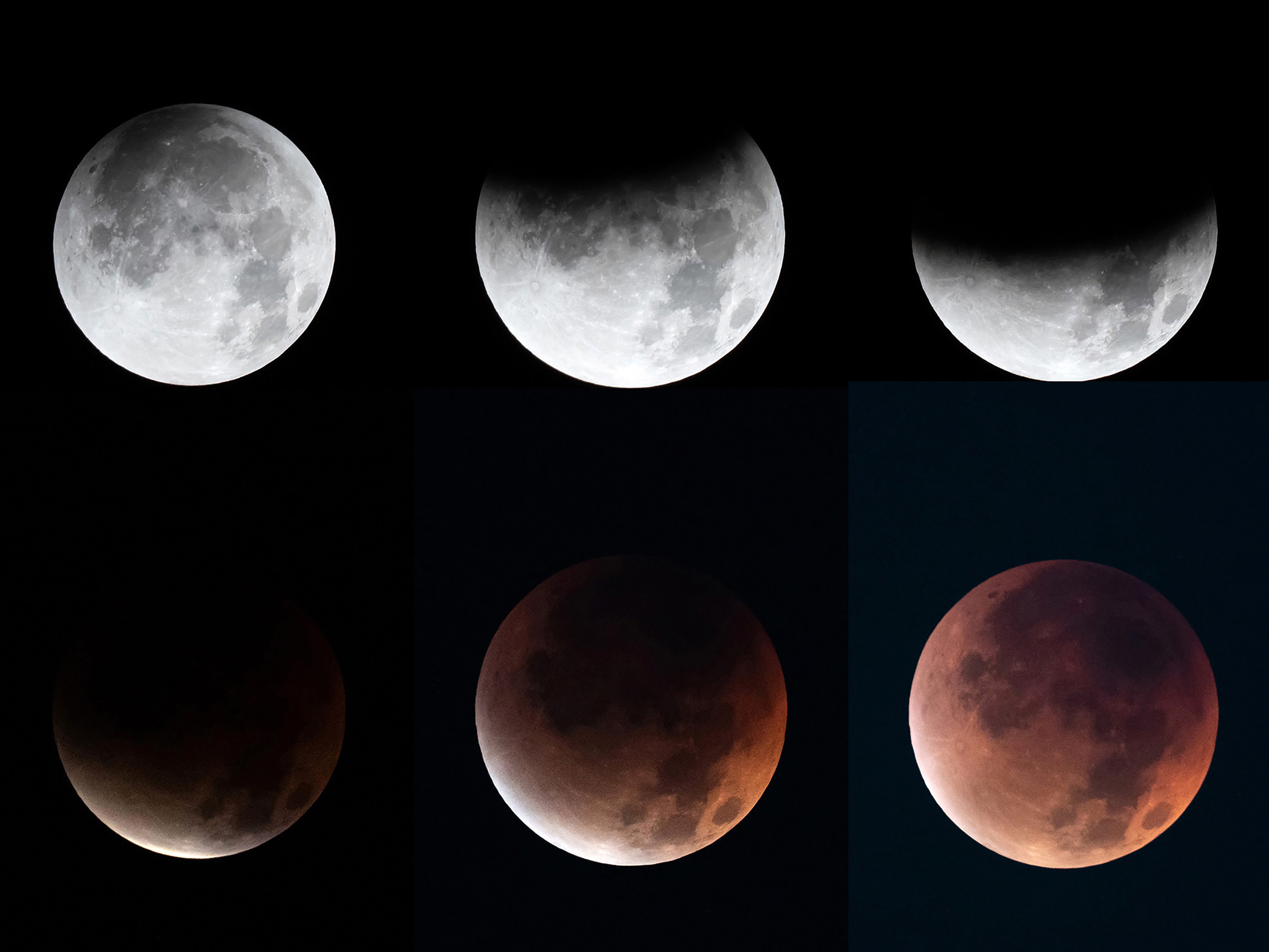
These views captured from Surabaya, Indonesia by photographer Robertus Pudyanto reveal the same phases captured from a more southerly perspective, once again showing the lunar disk transform in the runup to totality.
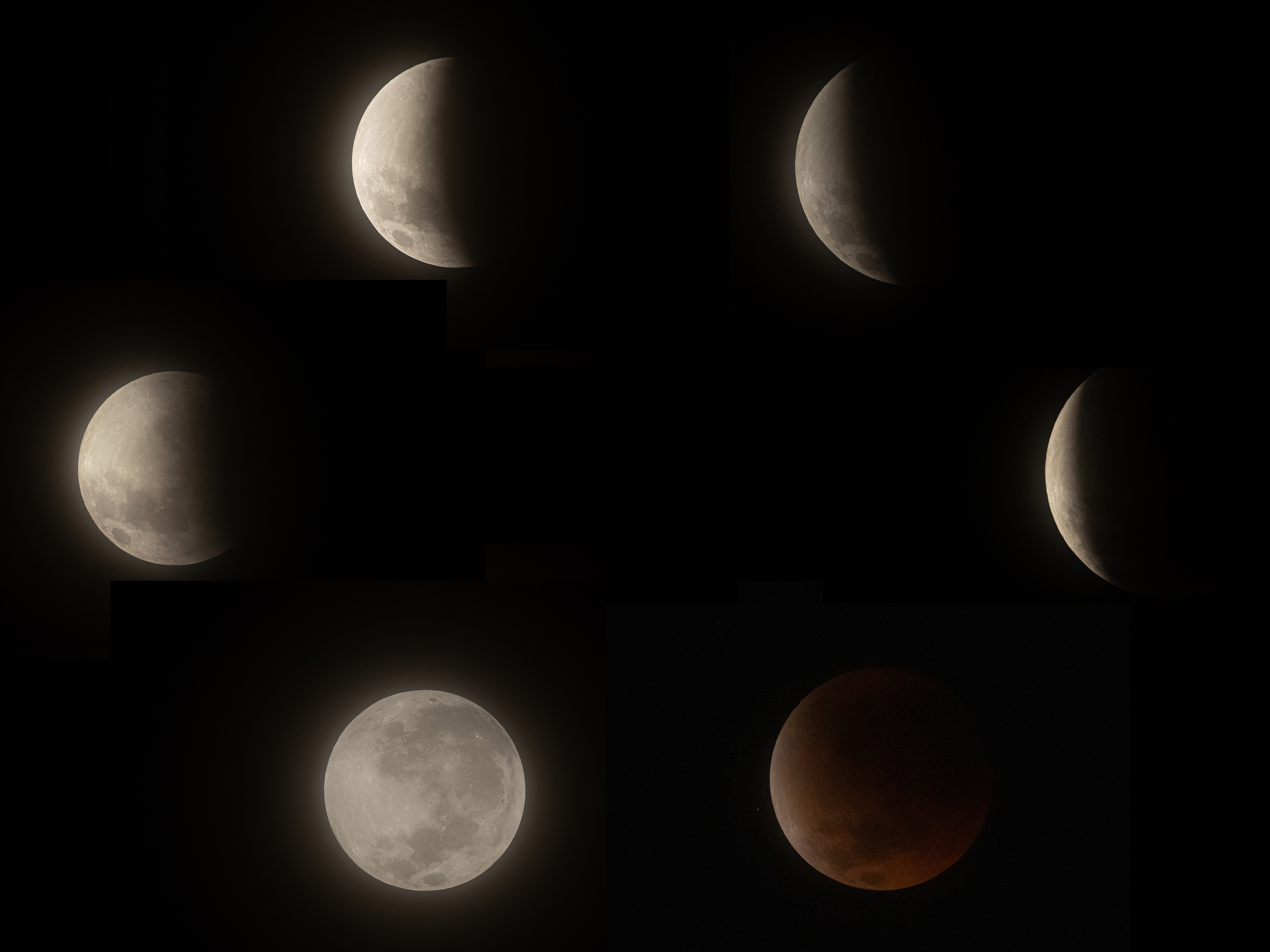
Pudyanto also arrayed his images in a line to create a timelapse effect, showing how the lunar disk changed as it fell ever deeper into Earth’s shadow.

September’s blood moon was the opening act of a two-part eclipse season, which will see the moon pass across the face of the sun without entirely occulting it on Sept. 21, triggering a partial solar eclipse. That event will be visible from New Zealand, eastern Australia and Antarctica, along with several Pacific Ocean islands.
Remember: a total lunar eclipse is completely safe to view with the naked eye. However, stargazers hoping to catch a glimpse of the upcoming partial solar eclipse, or of the August 2026 total solar eclipse, will need to pick up a pair of reliable eclipse glasses to protect their vision.
Photographers hoping to capture images of these events should also check out our roundup of the best cameras for astrophotography and read our guide to safely photographing a solar eclipse.
Stay Informed With the Latest & Most Important News
Previous Post
Next Post
-
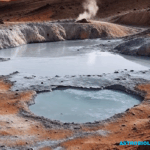 01From Polymerization-Enabled Folding and Assembly to Chemical Evolution: Key Processes for Emergence of Functional Polymers in the Origin of Life
01From Polymerization-Enabled Folding and Assembly to Chemical Evolution: Key Processes for Emergence of Functional Polymers in the Origin of Life -
 02Panasonic Leica Summilux DG 15mm f/1.7 ASPH review
02Panasonic Leica Summilux DG 15mm f/1.7 ASPH review -
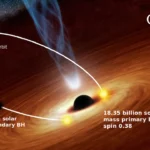 03Two Black Holes Observed Circling Each Other for the First Time
03Two Black Holes Observed Circling Each Other for the First Time -
 04How New NASA, India Earth Satellite NISAR Will See Earth
04How New NASA, India Earth Satellite NISAR Will See Earth -
 05And Thus Begins A New Year For Life On Earth
05And Thus Begins A New Year For Life On Earth -
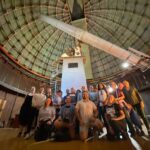 06Astronomy Activation Ambassadors: A New Era
06Astronomy Activation Ambassadors: A New Era -
07SpaceX launch surge helps set new global launch record in 2024












